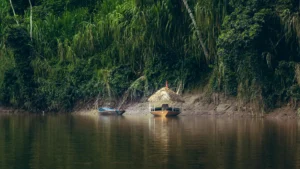Peru stands out as one of the most biodiverse countries on the planet, hosting a wide variety of ecosystems ranging from deserts and mountains to tropical rainforests and high-altitude lakes. Peru’s natural reserves are essential for conserving this valuable wealth, providing refuges where flora and fauna can thrive undisturbed while also offering ecotourism options for those who wish to explore them.
With Machu Picchu Wayna, you will learn about what natural reserves are, their significance, the main protected areas in the country, and some recommendations for enjoying them responsibly.
What are Natural Reserves and Why Are They Important?
Definition and Purpose of Natural Reserves
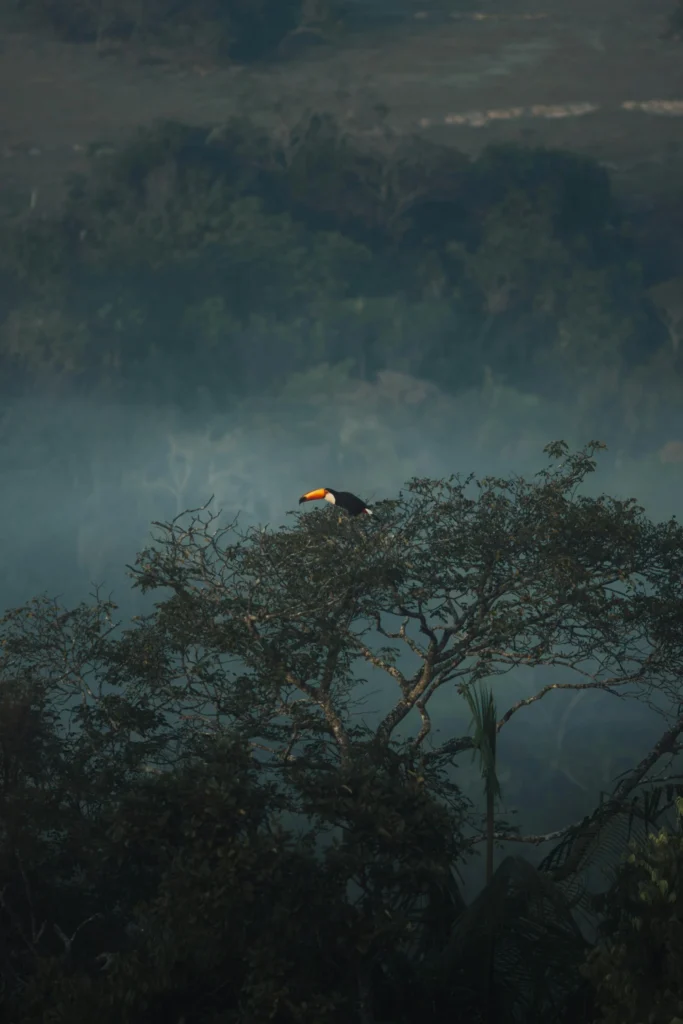
A toucan perched on a tree in the jungle
Peru’s Natural Reserves are protected areas established for the conservation of the country’s biodiversity. These reserves aim to protect ecosystems, endemic species, and key habitats, ensuring the preservation of flora and fauna in their natural state.
Peruvian legislation prohibits activities that could threaten the integrity of these reserves, such as resource exploitation or urbanization, allowing nature to develop without human interference.
The primary goal of these reserves is to conserve Peru’s rich biodiversity, home to a vast array of species, many of which are unique in the world. Additionally, natural reserves promote ecotourism and scientific research, providing opportunities for environmental education and raising awareness about the importance of ecosystem preservation.
Importance of Conservation in Peru
Conservation in Peru is vital due to its immense biodiversity and the variety of ecosystems it hosts, many of which are unique worldwide. Peru is home to numerous endemic species and vast areas of the Amazon rainforest, one of the largest and most diverse ecosystems on the planet.
Protecting these natural resources not only preserves flora and fauna but is also essential for the well-being of local communities, who depend on ecosystem services such as water, forest resources, and pollination.
Conservation is also key to mitigating climate change, as Peru’s forests act as carbon sinks, helping regulate the global climate. Furthermore, the country is a prime ecotourism destination, generating significant economic revenue and fostering awareness about the need to protect the environment.
Main Natural Reserves in Peru
Paracas National Reserve
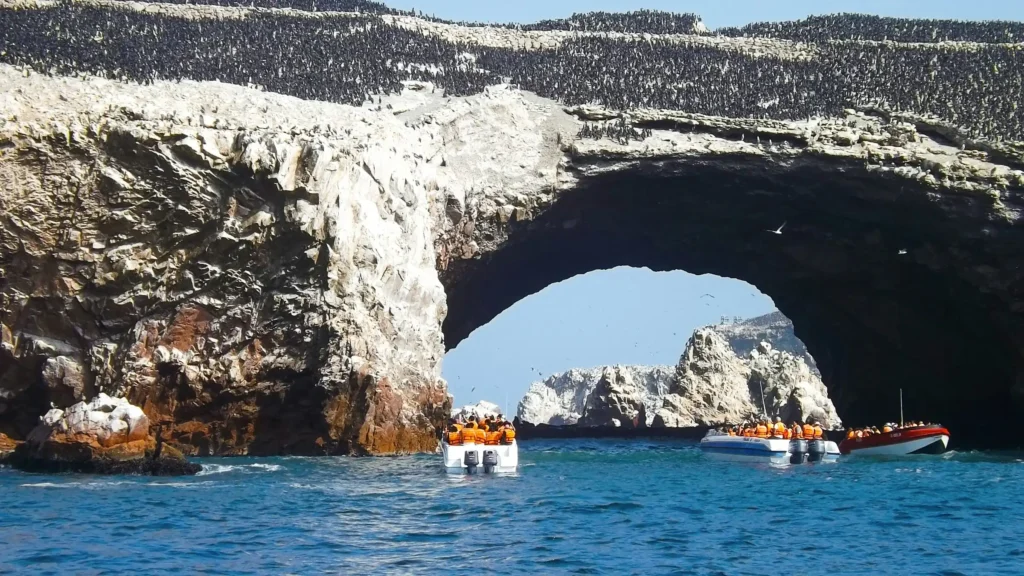
Location and Ecosystem
The Paracas National Reserve is located on the southern coast of Peru, in the Ica region. This ecosystem, which combines coastal desert and marine environments, is renowned for its rich biodiversity and the large number of marine species. The beaches of Paracas are home to sea lions, Humboldt penguins, and various migratory bird species.
Activities and Sustainable Tourism
The Paracas National Reserve offers various sustainable tourism activities:
- Wildlife Watching: Take boat tours to observe sea lions, Humboldt penguins, and migratory birds in their natural habitat.
- Tours to the Ballestas Islands: Boat excursions to the Ballestas Islands, home to diverse marine species, including sea lions and birds.
- Desert Hiking: Walks through the coastal desert, exploring rock formations and dunes while enjoying the scenery.
- Kayaking and Paddleboarding: Water activities in the Paracas sea to explore the coast peacefully.
- Cultural Visits: Tours of the Paracas Site Museum and archaeological zone, learning about the ancient Paracas culture.
Tambopata National Reserve
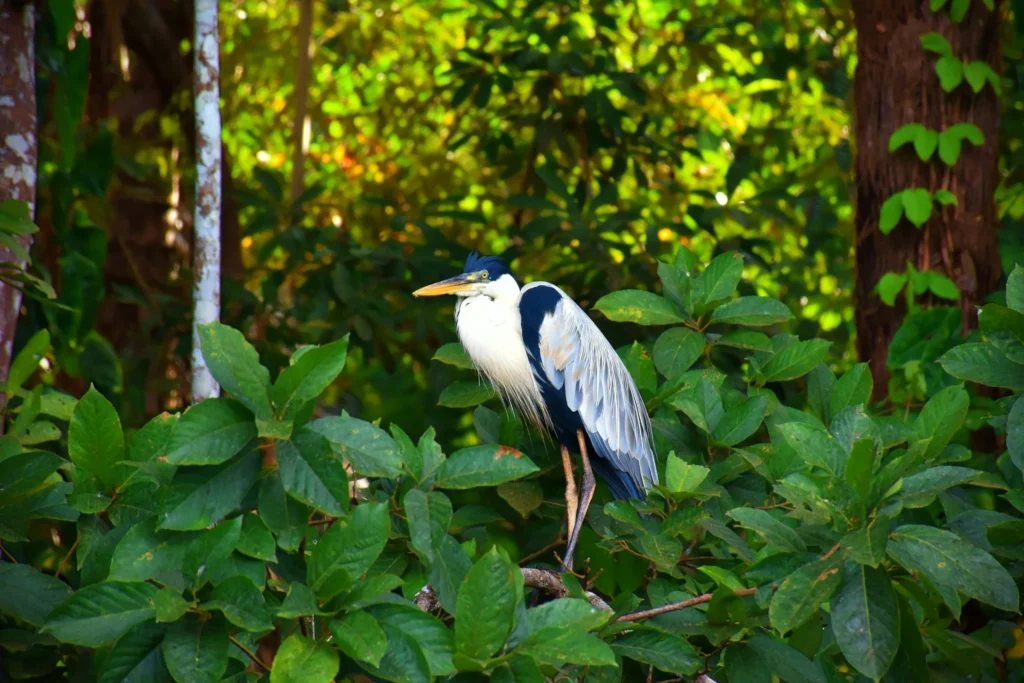
Location and Biodiversity
Located in the Madre de Dios region, in the Peruvian Amazon, this 270,000-hectare reserve protects Amazon rainforest ecosystems. With extraordinary biodiversity, Tambopata is home to thousands of bird, mammal, reptile, and plant species. Its tropical rainforest ecosystem is among the most biodiverse on the planet, featuring attractions like the Macaw Clay Lick, where dozens of macaws gather to feed.
Main Attractions and Experiences
Tambopata National Reserve offers various attractions and experiences:
- Wildlife Observation: Boat tours and hikes to see species such as jaguars, monkeys, and macaws in their natural habitat.
- Lake Sandoval: A beautiful lake ideal for boat rides, offering chances to see water birds, caimans, and giant otters.
- Macaw Clay Lick: Visit clay licks where macaws feed on mineral-rich clay, a unique natural spectacle.
- Night Walks: Explore the jungle at night, observing nocturnal wildlife like insects and frogs.
- Visits to Indigenous Communities: Learn about the traditions of local indigenous communities such as the Yine and Harakbut.
- Jungle Hiking: Walk through natural trails to learn about Amazonian flora and fauna.
Pacaya Samiria National Reserve
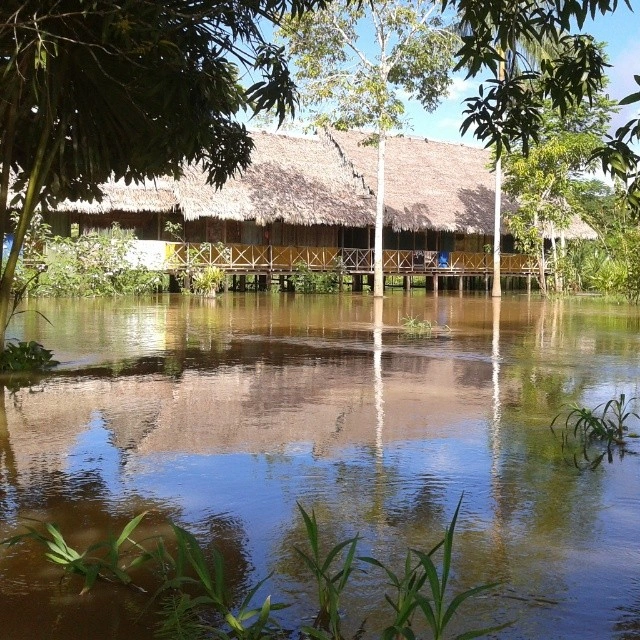
Location and Unique Habitat
Located in the Loreto department in the Peruvian Amazon, it is one of the country’s largest reserves, covering over 2 million hectares. It protects tropical rainforest and wetland ecosystems, housing species like the pink dolphin and the jaguar. It is vital for the conservation of regional biodiversity and water resources.
Wildlife and Ecotourism Activities
Pacaya Samiria National Reserve is home to rich fauna, including pink dolphins, jaguars, howler and titi monkeys, and various birds such as toucans and macaws. Caimans and anacondas can also be found in its wetlands, making it an ideal place to observe Amazonian biodiversity.
Activities include:
- Boat Tours: River and lake tours to observe aquatic wildlife, such as pink dolphins.
- Jungle Walks: Explore Amazonian biodiversity through jungle trails.
- Sustainable Fishing: Engage in environmentally respectful fishing activities.
- Birdwatching: Spot various bird species in their natural habitat.
Salinas and Aguada Blanca National Reserve
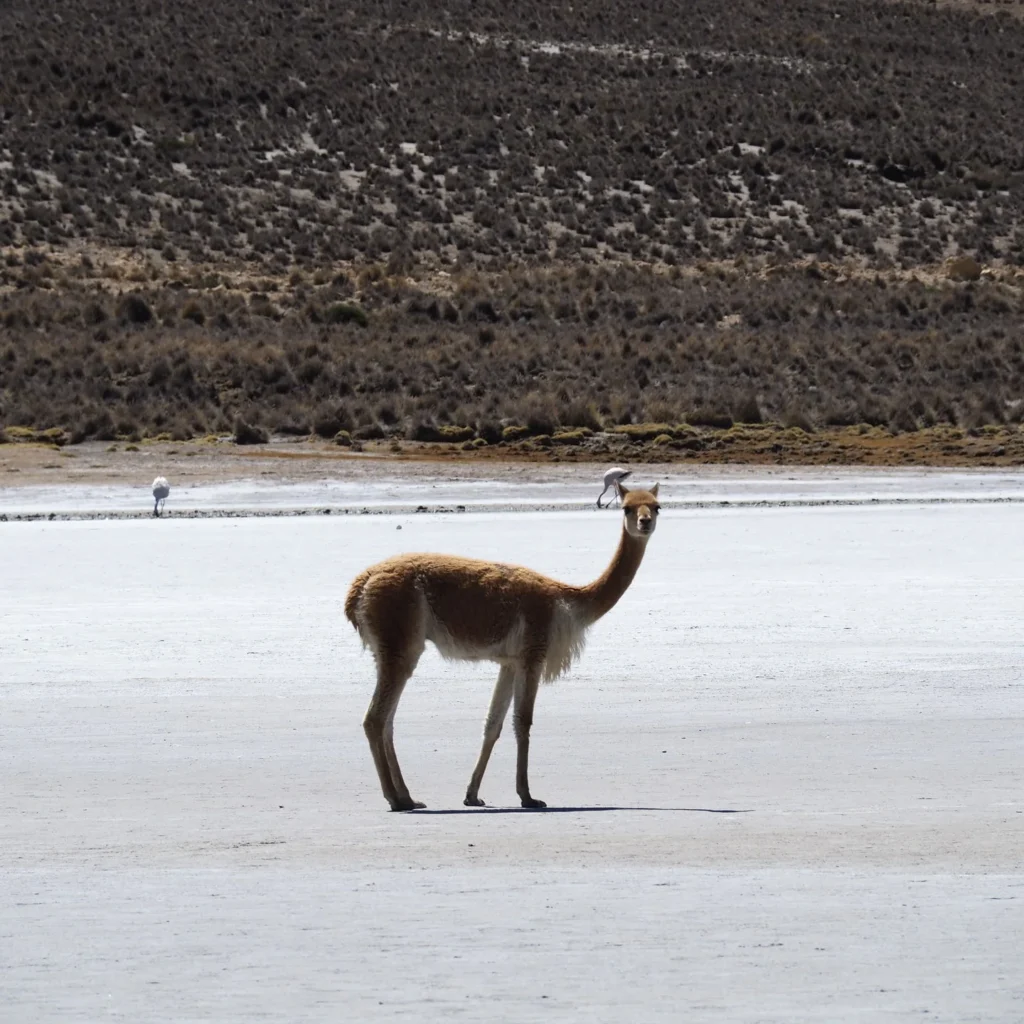
Location and Natural Attractions
Located between the Arequipa and Moquegua regions, the Salinas and Aguada Blanca National Reserve protects an Andean puna ecosystem, featuring imposing volcanoes, lagoons, and salt flats. This reserve is home to species such as the vicuña, alpaca, and Andean flamingo.
It offers attractions such as the Salinas Lagoon, the Misti, Pichu Pichu, and Chachani volcanoes. Additionally, its wetlands and marshes, such as the Laguna del Indio-Dique de los Españoles, are essential for local biodiversity and are protected as Ramsar sites.
Flora and Fauna Species
The Salinas and Aguada Blanca National Reserve harbors a rich biodiversity, both in flora and fauna.
Fauna
- Vicuña: An emblematic Andean camelid found in the páramo zones.
- Taruca: A type of deer that inhabits the high areas of the reserve.
- Andean Condor: One of the world’s largest vultures, soaring over the valleys and mountains of the reserve.
- Andean Flamingo: Birds that inhabit saline lagoons and are endangered.
- Guanaco: Another Andean camelid that shares its habitat with the vicuña.
Flora
- Queñual: A typical tree of high-altitude forests, essential for the local ecosystem.
- Paja brava: A plant resistant to high altitudes, covering vast páramo areas.
- Cactus: Various species growing in the reserve’s most arid regions.
- High-altitude Shrubs: Vegetation adapted to the region’s extreme conditions.
Tumbes National Reserve
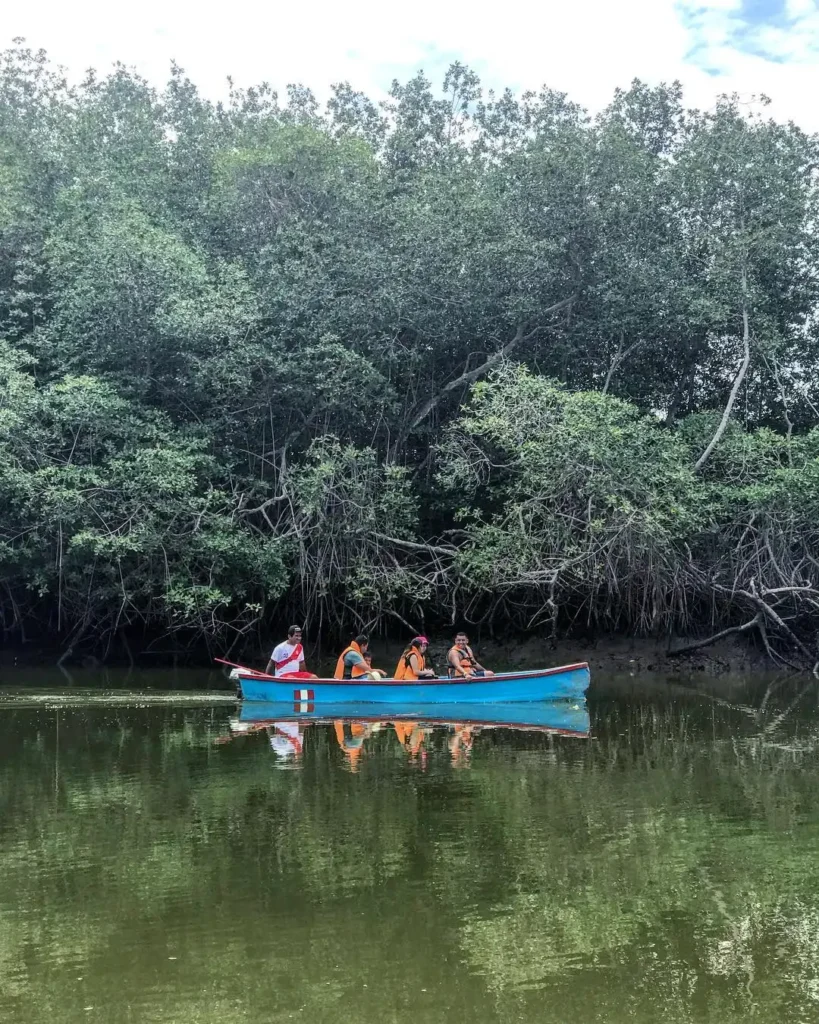
Location and Dry Forest Ecosystem
It is located in the Tumbes region and protects 75,102 hectares of tropical dry forest, a unique ecosystem characterized by long drought periods and seasonal rains. It harbors flora such as algarrobo, ceibo, and palo santo, as well as fauna like the white-tailed deer, the Tumbes howler monkey, and various endemic birds. This ecosystem is crucial for its biodiversity and the services it provides to local communities, such as climate regulation and natural resources.
Conservation Activities and Tourism
The reserve offers ecotourism activities, such as hiking to observe local flora and fauna and visiting conservation projects that help protect this unique ecosystem. Visitors are encouraged to follow the guides’ recommendations and respect conservation rules.
Titicaca National Reserve
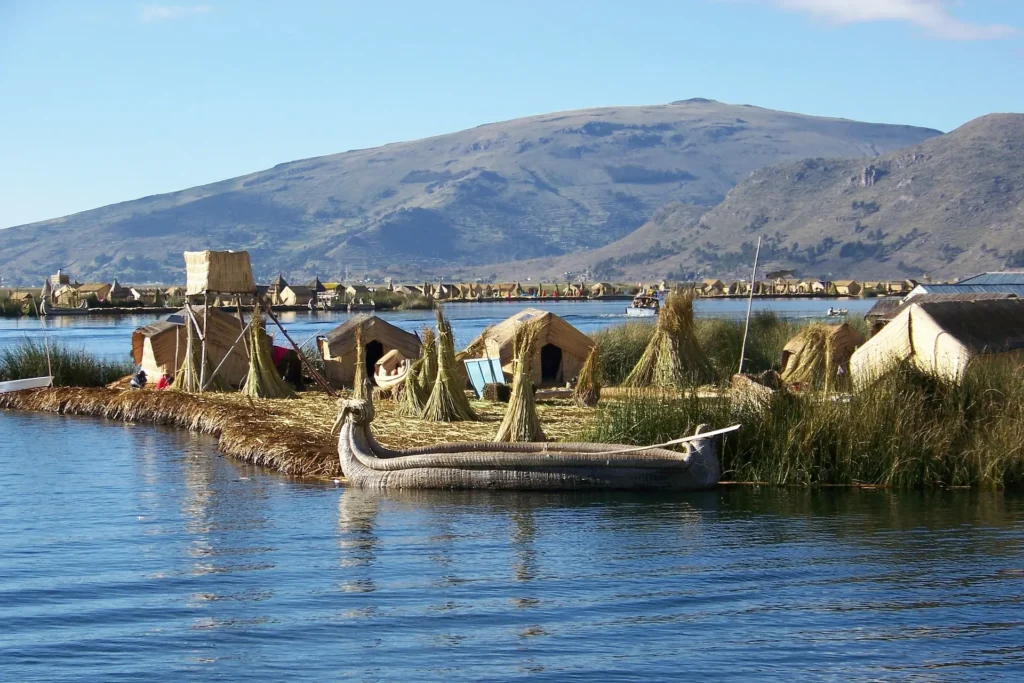
Location and Lake Ecosystem
The Titicaca National Reserve is located in the Peruvian highlands, in the Puno region, and protects an area of 36,180 hectares in the highest navigable lake in the world. This unique ecosystem combines waters, totora reed beds, and wetlands, providing an ideal habitat for a diverse range of species.
This lacustrine ecosystem is essential for the conservation of aquatic species and for the local communities that depend on the lake.
Culture and Local Communities
The Titicaca National Reserve is home to communities that preserve ancestral traditions and maintain a unique connection with the lake. The main communities include:
- The Uros: They live on floating islands made of totora reeds, where they practice artisanal fishing, weaving, and traditional construction using this material.
- The Quechuas: Residing on islands such as Taquile and Amantaní, they are known for their textile craftsmanship, recognized by UNESCO, and community-based tourism.
- The Aymaras: Present in areas near the lake, they are recognized for their music, dances, and ceremonies, as well as an economy based on agriculture, fishing, and livestock farming.
Allpahuayo Mishana National Reserve
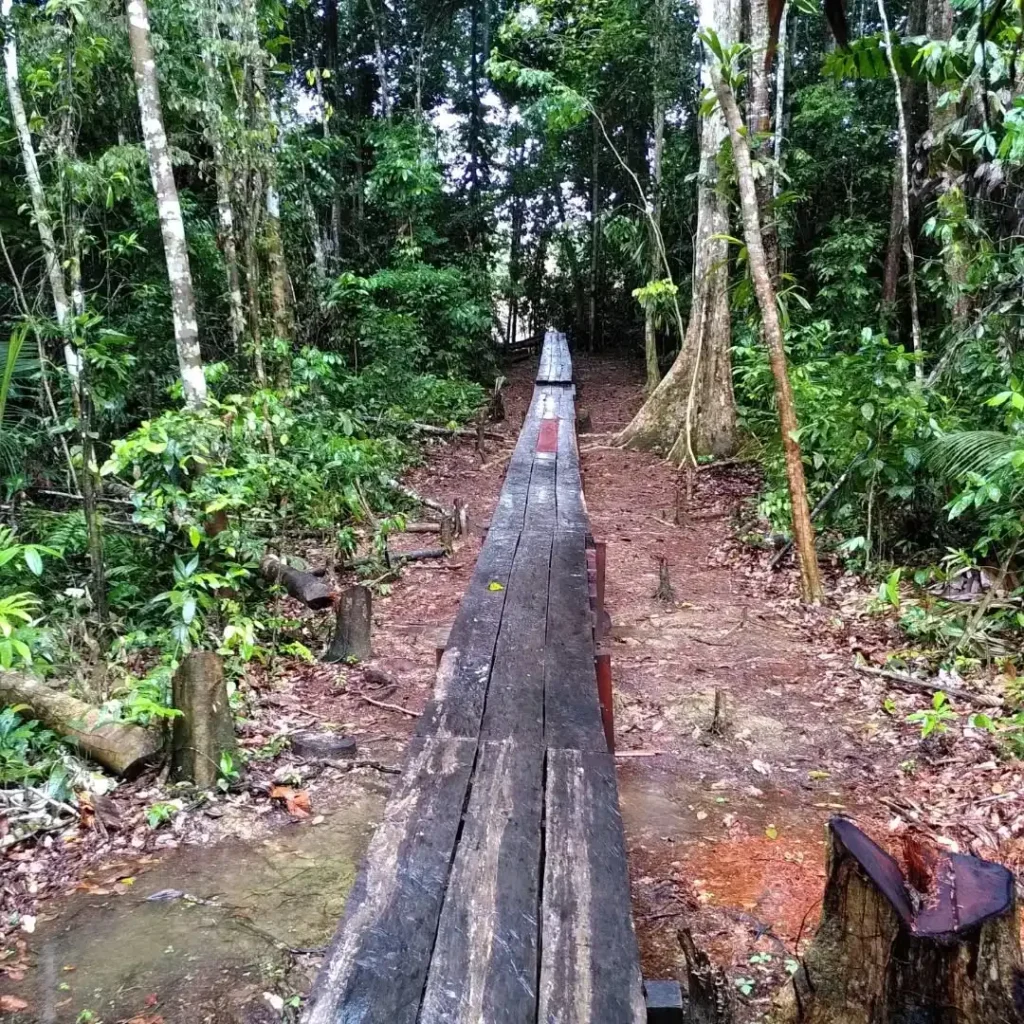
Location and Biological Diversity
The Allpahuayo Mishana National Reserve is located in the Loreto region, in Iquitos, within the Nanay River basin. It protects approximately 58,000 hectares of Amazon rainforest, characterized by its diverse ecosystems, including white sand forests or “varillales”, which are unique to the Peruvian Amazon. This ecosystem is home to numerous endemic and endangered species.
Sustainable Activities and Ecosystem Protection
Visitors can enjoy birdwatching and guided nature walks, exploring the rich Amazonian flora with the help of specialized guides who explain the importance of preserving this unique habitat. Tourism in this reserve is carefully managed to minimize environmental impact and promote sustainable conservation practices.
Tips for Visiting Natural Reserves in Peru
Recommendations for Responsible Tourism
- Respect local regulations: Each reserve has specific rules to protect biodiversity and the environment. Learn about them before visiting and follow the instructions of local guides.
- Minimize your environmental impact: Do not leave trash along the way, do not damage plants, and do not alter animal habitats. Use marked trails and maintain a respectful attitude toward nature.
- Support sustainable tourism: Choose tourism services that promote conservation and benefit local communities. Participate in educational activities that allow you to learn about the ecosystem and local species.
- Wear appropriate clothing and gear: Wear light and comfortable clothing suitable for the climate, and bring insect repellent and sunscreen. Use proper footwear for hiking and carry water in reusable containers.
- Avoid invasive activities: Do not feed animals or get too close to them. Maintain a safe distance to avoid altering their natural behavior.
Climate and Best Time to Visit
The best time to visit depends on each reserve. Jungle areas, such as Tambopata and Pacaya Samiria, are more accessible during the dry season (from May to September), while Andean reserves, such as Salinas and Aguada Blanca, are ideal during the same period to avoid rain. Be sure to check the specific climate of each place before planning your trip.
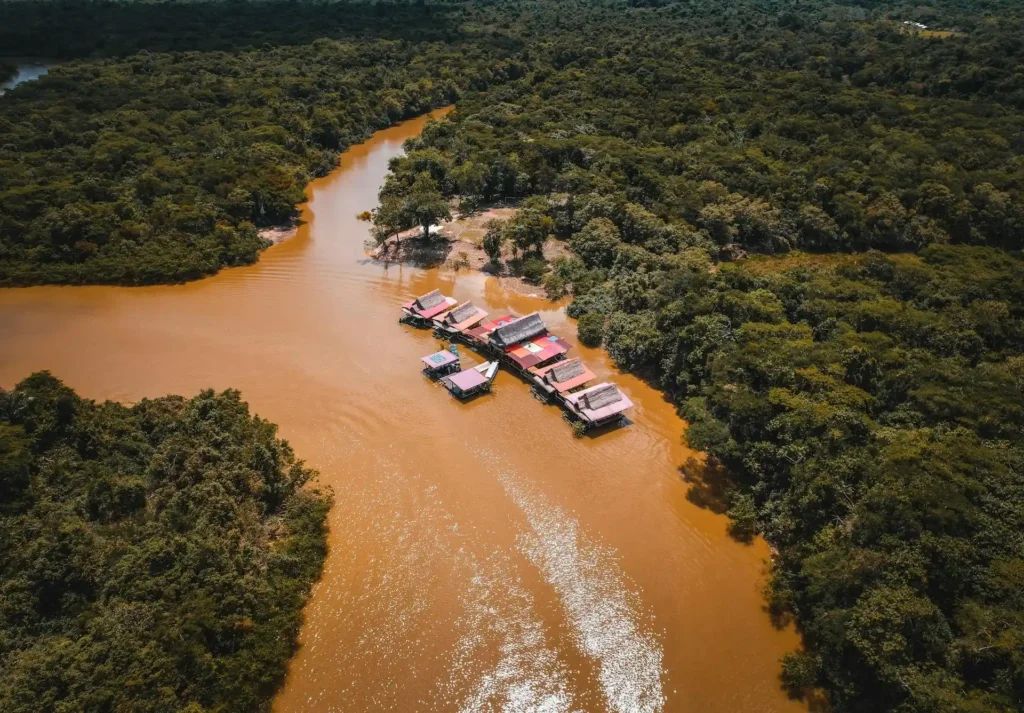
Frequently Asked Questions About Natural Reserves in Peru
What Are the Differences Between National Parks and National Reserves?
National parks are primarily dedicated to nature conservation and usually restrict access to ensure habitat protection. National reserves, on the other hand, allow greater access to tourism and certain sustainable activities.
Can You Camp in Natural Reserves?
Some reserves allow camping in designated areas, but always under strict rules to protect the environment. It is important to check with the authorities of each reserve before planning to camp.
Is It Necessary to Hire a Guide to Visit These Areas?
In many reserves, hiring a guide is mandatory and recommended, as they know the terrain and ensure a safe and educational visit. Additionally, guides support conservation by educating visitors on the importance of protecting these places.
Which Are the Best Reserves for Wildlife Watching?
Tambopata, Pacaya Samiria, and Allpahuayo Mishana are excellent options for wildlife observation. These reserves are home to a great variety of species and offer observation activities in protected natural environments.
